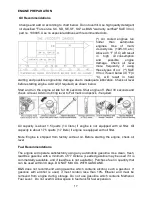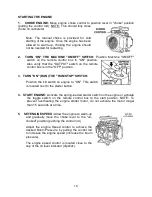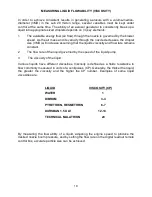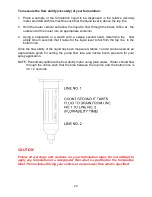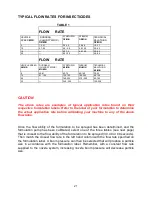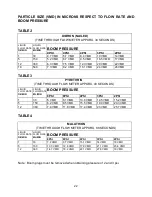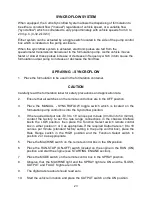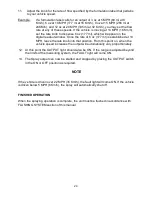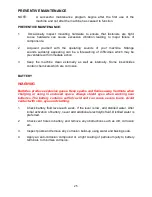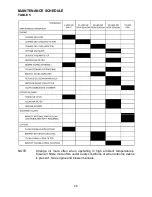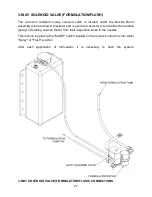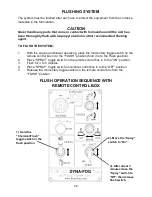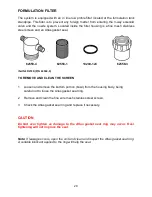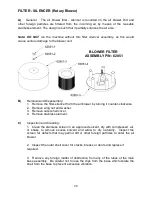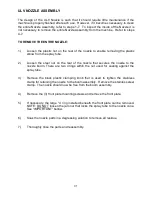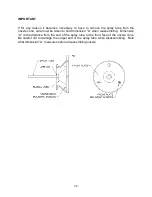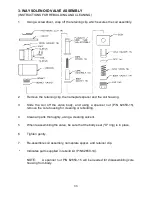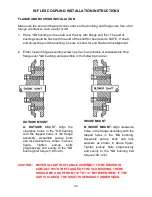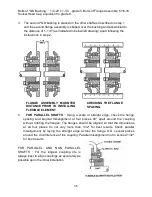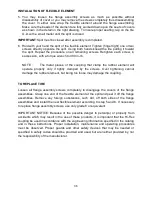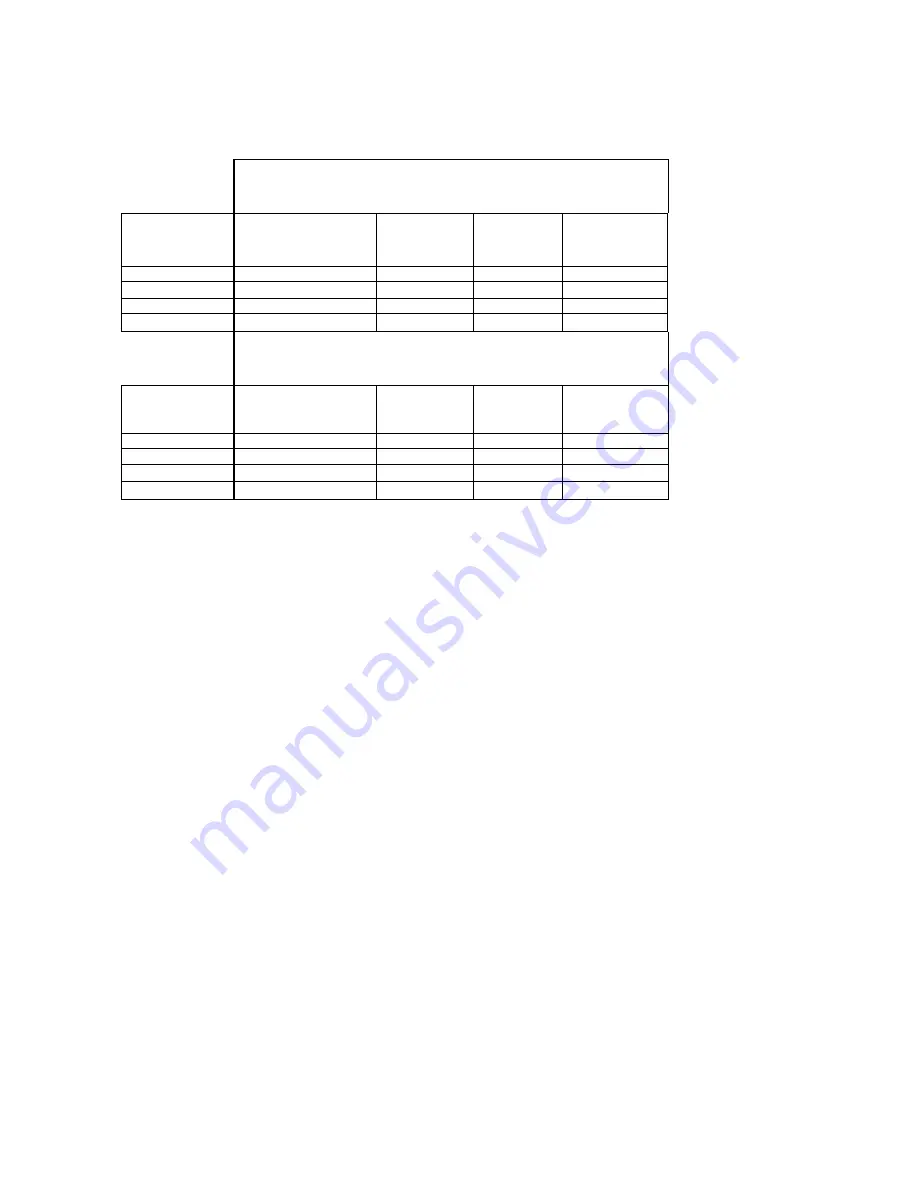
21
TYPICAL FLOW RATES FOR INSECTICIDES
TABLE 1
FLOW RATE
VEHICLE
SPEED
MPH
DURSBAN
(CHLORPYRIFOS)
OZ/MIN
PYRETHRIN
OZ/MIN
D1BROM
OZ/MIN
TECHNICAL
M
A
LATHION
OZ/MIN
5
1.4-2.7
2.0-2.5
3.0-6.0
1.0-2.1
10
2.7-5.3
4.0 - 5.0
6.0-12.0
2.0-4.3
15
—
6.0-7.5
9.0-18.0
3.0-6.5
20
—
8.0-10.0
—
4.0-8.6
FLOW RATE
VEHICLE SPEED
KM/HR
DURSBAN
(CHLORPYRIFOS)
ML/MIN
PYRETHRIN
ML/MIN
DIBROM
ML/MIN
TECHNICAL
MALATHION
ML/MIN
8
42-81
60-75
90-180
30-63
16
81 -159
120-150
180-360
60-129
24
—
180-225
270 - 540
90-195
32
—
240 - 300
—
120-258
CAUTION
The above rates are examples of typical application rates found on their
respective formulation labels. Refer to the label of your formulation to determine
the actual application rate before calibrating your machine to any of the above
flow rates.
Once the flow ability of the formulation to be sprayed has been determined, and the
formulation pump has been calibrated, select one of the three tables (see next page)
that is closest to the flow ability of the formulation to be sprayed (34, 40 or 88 seconds).
Then match the closest flow rate in the left hand column with the flow rate specified on
the formulation label. A boom pressure can then be selected that will produce a particle
size in accordance with the formulation label. Remember, with a constant flow rate
supplied to the nozzle system, increasing nozzle boom pressure will decrease particle
size.
Содержание MAXI-PRO 2D ULV
Страница 6: ...6 MAJOR COMPONENTS DIAGRAM ...
Страница 9: ...9 ...
Страница 39: ...39 ...
Страница 43: ...43 BOOM ASSEMBLY MAXI PRO 2D P N 64905 ...
Страница 50: ...50 ...











